Yonggang Wen
Fusion Intelligence for Digital Twinning AI Data Centers: A Synergistic GenAI-PhyAI Approach
May 26, 2025Abstract:The explosion in artificial intelligence (AI) applications is pushing the development of AI-dedicated data centers (AIDCs), creating management challenges that traditional methods and standalone AI solutions struggle to address. While digital twins are beneficial for AI-based design validation and operational optimization, current AI methods for their creation face limitations. Specifically, physical AI (PhyAI) aims to capture the underlying physical laws, which demands extensive, case-specific customization, and generative AI (GenAI) can produce inaccurate or hallucinated results. We propose Fusion Intelligence, a novel framework synergizing GenAI's automation with PhyAI's domain grounding. In this dual-agent collaboration, GenAI interprets natural language prompts to generate tokenized AIDC digital twins. Subsequently, PhyAI optimizes these generated twins by enforcing physical constraints and assimilating real-time data. Case studies demonstrate the advantages of our framework in automating the creation and validation of AIDC digital twins. These twins deliver predictive analytics to support power usage effectiveness (PUE) optimization in the design stage. With operational data collected, the digital twin accuracy is further improved compared with pure physics-based models developed by human experts. Fusion Intelligence offers a promising pathway to accelerate digital transformation. It enables more reliable and efficient AI-driven digital transformation for a broad range of mission-critical infrastructures.
Toward Physics-Informed Machine Learning for Data Center Operations: A Tropical Case Study
May 26, 2025Abstract:Data centers are the backbone of computing capacity. Operating data centers in the tropical regions faces unique challenges due to consistently high ambient temperature and elevated relative humidity throughout the year. These conditions result in increased cooling costs to maintain the reliability of the computing systems. While existing machine learning-based approaches have demonstrated potential to elevate operations to a more proactive and intelligent level, their deployment remains dubious due to concerns about model extrapolation capabilities and associated system safety issues. To address these concerns, this article proposes incorporating the physical characteristics of data centers into traditional data-driven machine learning solutions. We begin by introducing the data center system, including the relevant multiphysics processes and the data-physics availability. Next, we outline the associated modeling and optimization problems and propose an integrated, physics-informed machine learning system to address them. Using the proposed system, we present relevant applications across varying levels of operational intelligence. A case study on an industry-grade tropical data center is provided to demonstrate the effectiveness of our approach. Finally, we discuss key challenges and highlight potential future directions.
Low-Precision Training of Large Language Models: Methods, Challenges, and Opportunities
May 02, 2025Abstract:Large language models (LLMs) have achieved impressive performance across various domains. However, the substantial hardware resources required for their training present a significant barrier to efficiency and scalability. To mitigate this challenge, low-precision training techniques have been widely adopted, leading to notable advancements in training efficiency. Despite these gains, low-precision training involves several components$\unicode{x2013}$such as weights, activations, and gradients$\unicode{x2013}$each of which can be represented in different numerical formats. The resulting diversity has created a fragmented landscape in low-precision training research, making it difficult for researchers to gain a unified overview of the field. This survey provides a comprehensive review of existing low-precision training methods. To systematically organize these approaches, we categorize them into three primary groups based on their underlying numerical formats, which is a key factor influencing hardware compatibility, computational efficiency, and ease of reference for readers. The categories are: (1) fixed-point and integer-based methods, (2) floating-point-based methods, and (3) customized format-based methods. Additionally, we discuss quantization-aware training approaches, which share key similarities with low-precision training during forward propagation. Finally, we highlight several promising research directions to advance this field. A collection of papers discussed in this survey is provided in https://github.com/Hao840/Awesome-Low-Precision-Training.
Transforming Future Data Center Operations and Management via Physical AI
Apr 07, 2025
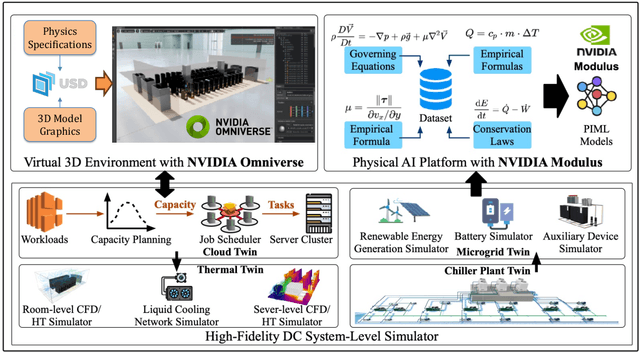

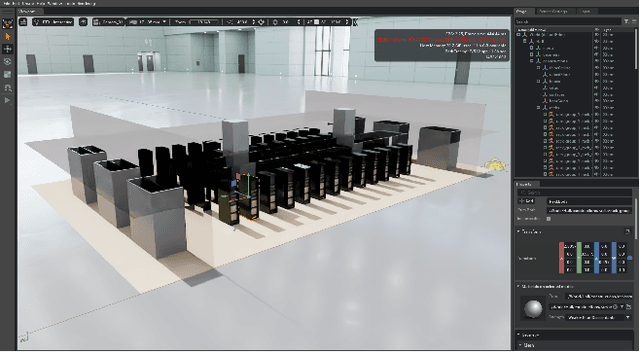
Abstract:Data centers (DCs) as mission-critical infrastructures are pivotal in powering the growth of artificial intelligence (AI) and the digital economy. The evolution from Internet DC to AI DC has introduced new challenges in operating and managing data centers for improved business resilience and reduced total cost of ownership. As a result, new paradigms, beyond the traditional approaches based on best practices, must be in order for future data centers. In this research, we propose and develop a novel Physical AI (PhyAI) framework for advancing DC operations and management. Our system leverages the emerging capabilities of state-of-the-art industrial products and our in-house research and development. Specifically, it presents three core modules, namely: 1) an industry-grade in-house simulation engine to simulate DC operations in a highly accurate manner, 2) an AI engine built upon NVIDIA PhysicsNemo for the training and evaluation of physics-informed machine learning (PIML) models, and 3) a digital twin platform built upon NVIDIA Omniverse for our proposed 5-tier digital twin framework. This system presents a scalable and adaptable solution to digitalize, optimize, and automate future data center operations and management, by enabling real-time digital twins for future data centers. To illustrate its effectiveness, we present a compelling case study on building a surrogate model for predicting the thermal and airflow profiles of a large-scale DC in a real-time manner. Our results demonstrate its superior performance over traditional time-consuming Computational Fluid Dynamics/Heat Transfer (CFD/HT) simulation, with a median absolute temperature prediction error of 0.18 {\deg}C. This emerging approach would open doors to several potential research directions for advancing Physical AI in future DC operations.
Rethinking Key-Value Cache Compression Techniques for Large Language Model Serving
Mar 31, 2025Abstract:Key-Value cache (\texttt{KV} \texttt{cache}) compression has emerged as a promising technique to optimize Large Language Model (LLM) serving. It primarily decreases the memory consumption of \texttt{KV} \texttt{cache} to reduce the computation cost. Despite the development of many compression algorithms, their applications in production environments are still not prevalent. In this paper, we revisit mainstream \texttt{KV} \texttt{cache} compression solutions from a practical perspective. Our contributions are three-fold. First, we comprehensively review existing algorithmic designs and benchmark studies for \texttt{KV} \texttt{cache} compression and identify missing pieces in their performance measurement, which could hinder their adoption in practice. Second, we empirically evaluate representative \texttt{KV} \texttt{cache} compression methods to uncover two key issues that affect the computational efficiency: (1) while compressing \texttt{KV} \texttt{cache} can reduce memory consumption, current implementations (e.g., FlashAttention, PagedAttention) do not optimize for production-level LLM serving, resulting in suboptimal throughput performance; (2) compressing \texttt{KV} \texttt{cache} may lead to longer outputs, resulting in increased end-to-end latency. We further investigate the accuracy performance of individual samples rather than the overall performance, revealing the intrinsic limitations in \texttt{KV} \texttt{cache} compression when handling specific LLM tasks. Third, we provide tools to shed light on future \texttt{KV} \texttt{cache} compression studies and facilitate their practical deployment in production. They are open-sourced in \href{https://github.com/LLMkvsys/rethink-kv-compression}{https://github.com/LLMkvsys/rethink-kv-compression}.
Advancing Generative Artificial Intelligence and Large Language Models for Demand Side Management with Electric Vehicles
Jan 26, 2025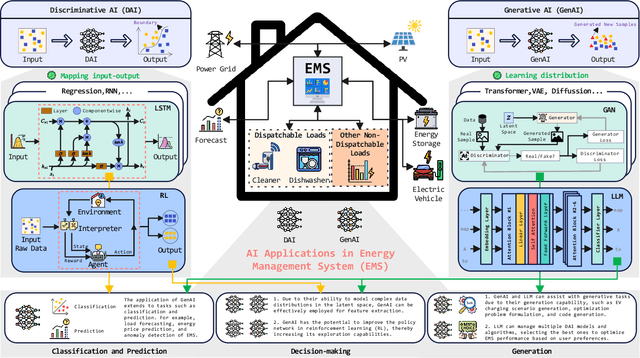
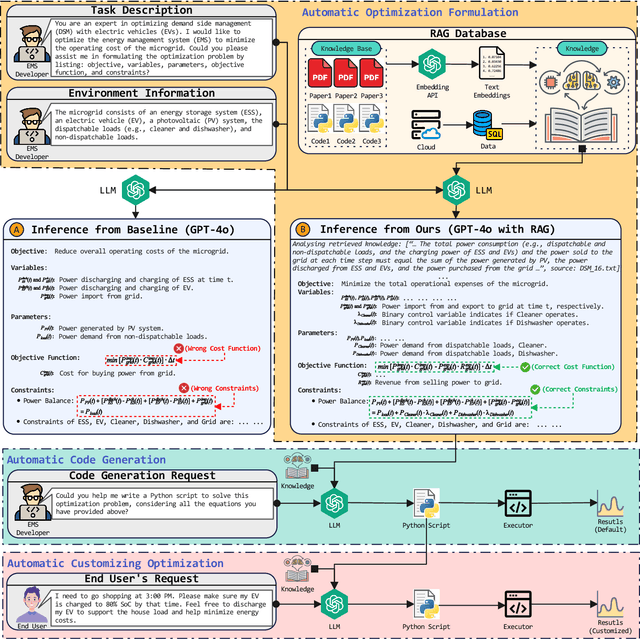
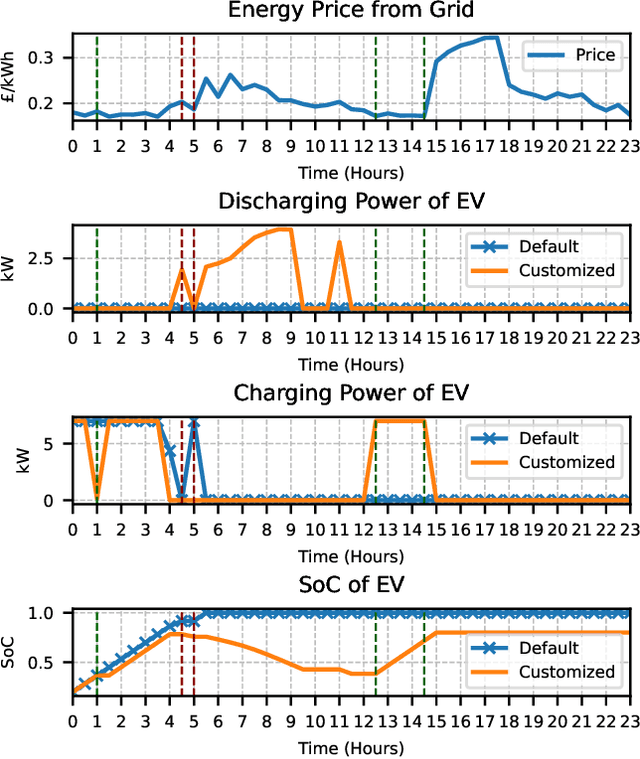

Abstract:Generative artificial intelligence, particularly through large language models (LLMs), is poised to transform energy optimization and demand side management (DSM) within microgrids. This paper explores the integration of LLMs into energy management, emphasizing their roles in automating the optimization of DSM strategies with electric vehicles. We investigate challenges and solutions associated with DSM and explore the new opportunities presented by leveraging LLMs. Then, We propose an innovative solution that enhances LLMs with retrieval-augmented generation for automatic problem formulation, code generation, and customizing optimization. We present a case study to demonstrate the effectiveness of our proposed solution in charging scheduling and optimization for electric vehicles, highlighting our solution's significant advancements in energy efficiency and user adaptability. This work underscores the potential of LLMs for energy optimization and fosters a new era of intelligent DSM solutions.
ADEM-VL: Adaptive and Embedded Fusion for Efficient Vision-Language Tuning
Oct 23, 2024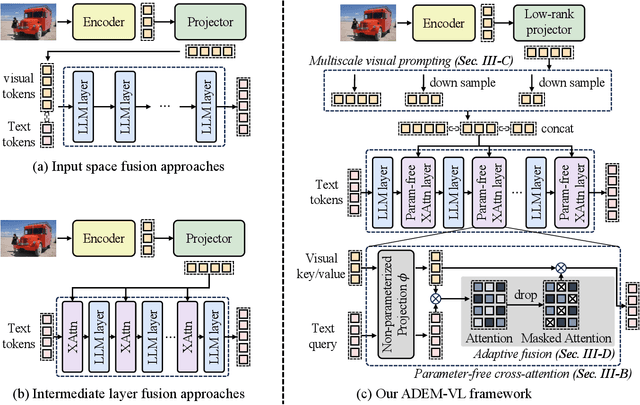
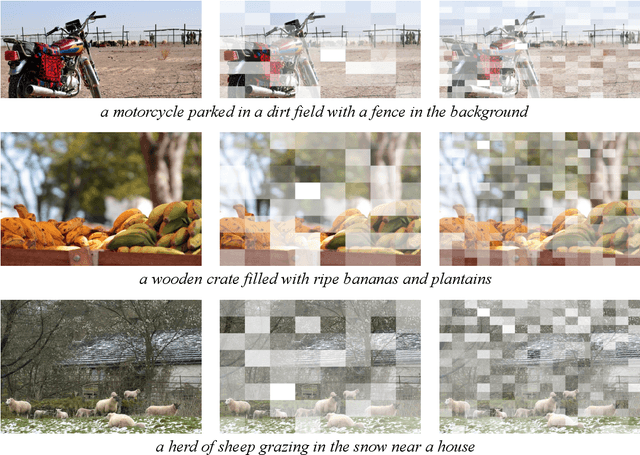
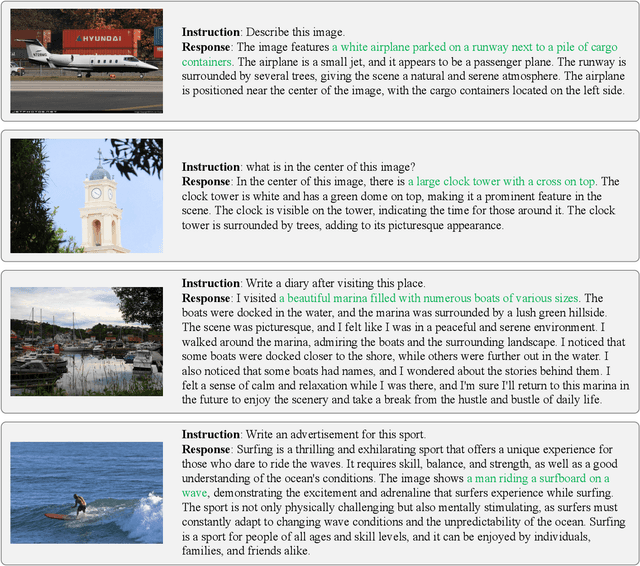
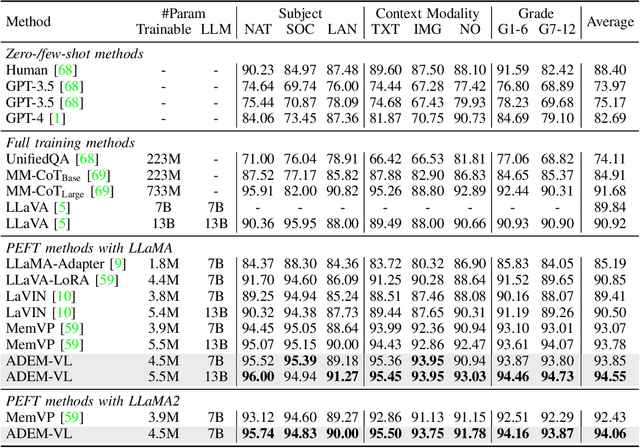
Abstract:Recent advancements in multimodal fusion have witnessed the remarkable success of vision-language (VL) models, which excel in various multimodal applications such as image captioning and visual question answering. However, building VL models requires substantial hardware resources, where efficiency is restricted by two key factors: the extended input sequence of the language model with vision features demands more computational operations, and a large number of additional learnable parameters increase memory complexity. These challenges significantly restrict the broader applicability of such models. To bridge this gap, we propose ADEM-VL, an efficient vision-language method that tunes VL models based on pretrained large language models (LLMs) by adopting a parameter-free cross-attention mechanism for similarity measurements in multimodal fusion. This approach only requires embedding vision features into the language space, significantly reducing the number of trainable parameters and accelerating both training and inference speeds. To enhance representation learning in fusion module, we introduce an efficient multiscale feature generation scheme that requires only a single forward pass through the vision encoder. Moreover, we propose an adaptive fusion scheme that dynamically discards less relevant visual information for each text token based on its attention score. This ensures that the fusion process prioritizes the most pertinent visual features. With experiments on various tasks including visual question answering, image captioning, and instruction-following, we demonstrate that our framework outperforms existing approaches. Specifically, our method surpasses existing methods by an average accuracy of 0.77% on ScienceQA dataset, with reduced training and inference latency, demonstrating the superiority of our framework. The code is available at https://github.com/Hao840/ADEM-VL.
Joint Input and Output Coordination for Class-Incremental Learning
Sep 09, 2024



Abstract:Incremental learning is nontrivial due to severe catastrophic forgetting. Although storing a small amount of data on old tasks during incremental learning is a feasible solution, current strategies still do not 1) adequately address the class bias problem, and 2) alleviate the mutual interference between new and old tasks, and 3) consider the problem of class bias within tasks. This motivates us to propose a joint input and output coordination (JIOC) mechanism to address these issues. This mechanism assigns different weights to different categories of data according to the gradient of the output score, and uses knowledge distillation (KD) to reduce the mutual interference between the outputs of old and new tasks. The proposed mechanism is general and flexible, and can be incorporated into different incremental learning approaches that use memory storage. Extensive experiments show that our mechanism can significantly improve their performance.
TorchGT: A Holistic System for Large-scale Graph Transformer Training
Jul 19, 2024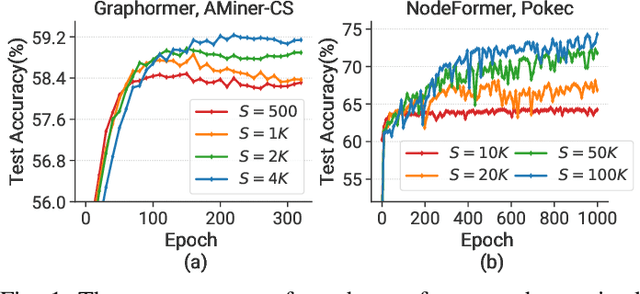
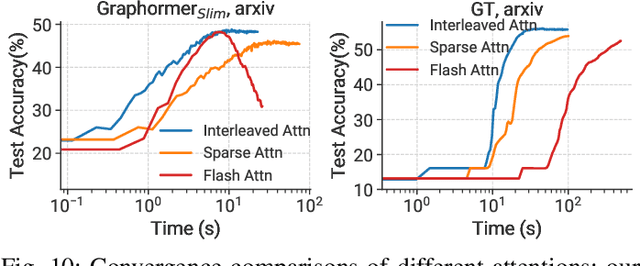
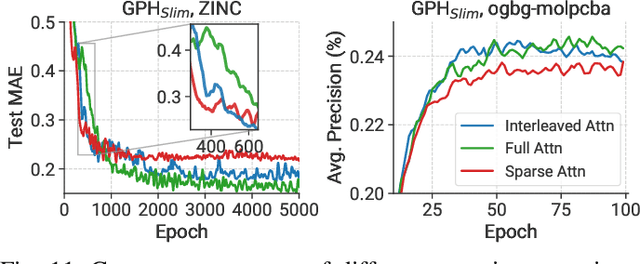
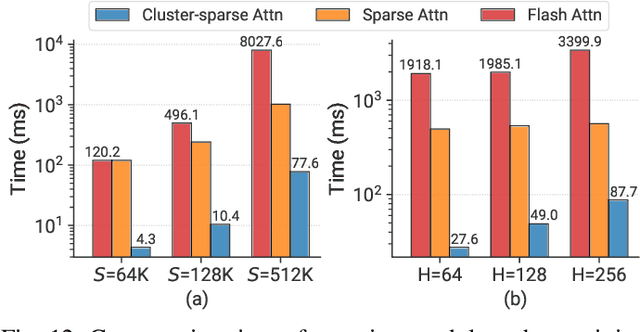
Abstract:Graph Transformer is a new architecture that surpasses GNNs in graph learning. While there emerge inspiring algorithm advancements, their practical adoption is still limited, particularly on real-world graphs involving up to millions of nodes. We observe existing graph transformers fail on large-scale graphs mainly due to heavy computation, limited scalability and inferior model quality. Motivated by these observations, we propose TorchGT, the first efficient, scalable, and accurate graph transformer training system. TorchGT optimizes training at different levels. At algorithm level, by harnessing the graph sparsity, TorchGT introduces a Dual-interleaved Attention which is computation-efficient and accuracy-maintained. At runtime level, TorchGT scales training across workers with a communication-light Cluster-aware Graph Parallelism. At kernel level, an Elastic Computation Reformation further optimizes the computation by reducing memory access latency in a dynamic way. Extensive experiments demonstrate that TorchGT boosts training by up to 62.7x and supports graph sequence lengths of up to 1M.
Characterization of Large Language Model Development in the Datacenter
Mar 12, 2024Abstract:Large Language Models (LLMs) have presented impressive performance across several transformative tasks. However, it is non-trivial to efficiently utilize large-scale cluster resources to develop LLMs, often riddled with numerous challenges such as frequent hardware failures, intricate parallelization strategies, and imbalanced resource utilization. In this paper, we present an in-depth characterization study of a six-month LLM development workload trace collected from our GPU datacenter Acme. Specifically, we investigate discrepancies between LLMs and prior task-specific Deep Learning (DL) workloads, explore resource utilization patterns, and identify the impact of various job failures. Our analysis summarizes hurdles we encountered and uncovers potential opportunities to optimize systems tailored for LLMs. Furthermore, we introduce our system efforts: (1) fault-tolerant pretraining, which enhances fault tolerance through LLM-involved failure diagnosis and automatic recovery. (2) decoupled scheduling for evaluation, which achieves timely performance feedback via trial decomposition and scheduling optimization.
 Add to Chrome
Add to Chrome Add to Firefox
Add to Firefox Add to Edge
Add to Edge